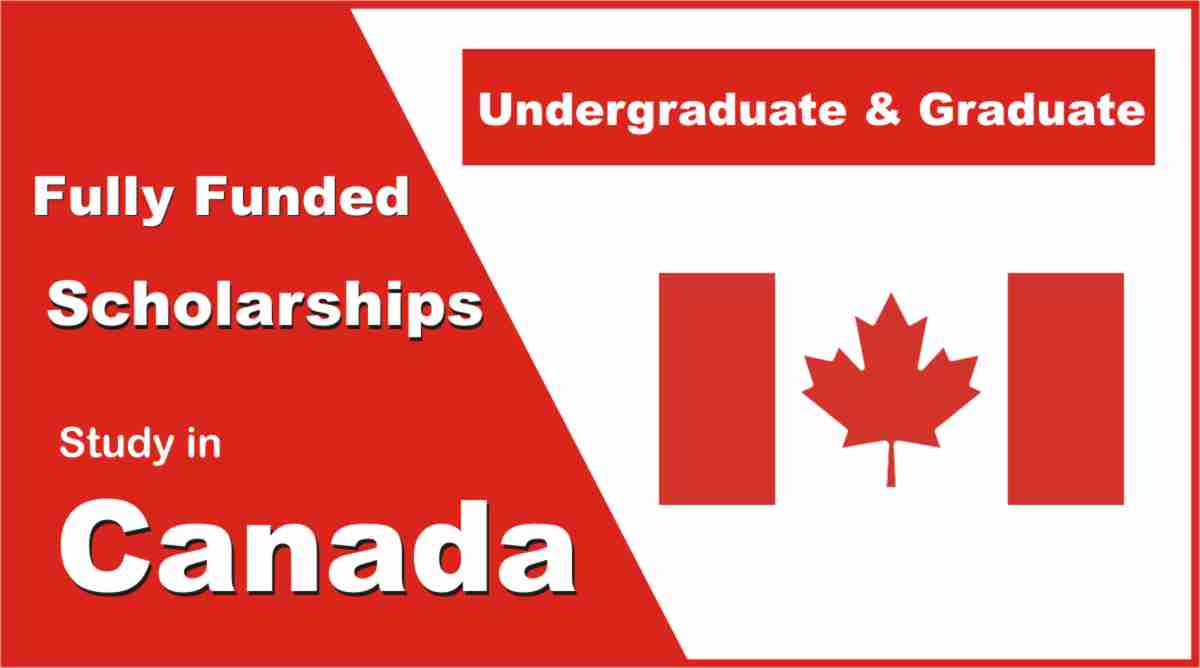Studying abroad is a life-changing adventure, offering international students the chance to immerse themselves in new cultures, gain world-class education, and build global careers. From semester exchanges in Paris to full-degree programs at Harvard, study abroad programs cater to diverse academic and personal goals. This ultimate guide dives deep into the world of study abroad programs, providing a roadmap to navigate options, costs, applications, and more. Packed with inspiring student stories, practical advice, and vibrant visuals, this article is your go-to resource for embarking on a transformative educational journey as of April 26, 2025.
Why Choose a Study Abroad Program?
Study abroad programs offer unparalleled opportunities for personal and academic growth. Here’s why they’re worth considering:
-
Global Education: Access top universities and innovative teaching methods.
-
Cultural Immersion: Experience new traditions, languages, and perspectives.
-
Career Advantage: Gain skills like adaptability and cross-cultural communication, valued by employers.
-
Personal Growth: Build independence, confidence, and lifelong friendships.
-
Networking: Connect with students, professors, and professionals worldwide.
Types of Study Abroad Programs
Study abroad programs vary in structure, duration, and focus. Understanding the options helps you choose the right fit:
-
Exchange Programs: Study at a partner university for a semester or year, earning credits transferable to your home institution.
-
Direct Enrollment: Enroll directly in a foreign university for a semester, year, or full degree.
-
Third-Party Provider Programs: Managed by organizations like CIEE or IES Abroad, offering structured experiences with support services.
-
Faculty-Led Programs: Short-term (1–8 weeks), led by your home university’s professors, often during summer or winter breaks.
-
Internship or Work-Study Programs: Combine academics with professional experience abroad.
-
Language Immersion Programs: Focus on mastering a language (e.g., Spanish in Spain, Japanese in Tokyo).
-
Full-Degree Programs: Pursue a bachelor’s, master’s, or PhD at a foreign university.
-
Research Programs: Conduct research abroad, often for graduate students or specific projects.
Top Destinations for Study Abroad Programs
Certain countries stand out for their academic excellence, cultural richness, and student-friendly environments. Here are some of the best:
1. United States
-
Why Choose?: Home to Ivy League schools and diverse programs, offering flexibility and innovation.
-
Popular Programs: Exchange at UC Berkeley, full degrees at MIT, summer programs at NYU.
-
Costs: $20,000–$70,000/year (tuition); $10,000–$20,000/year (living).
-
Scholarships: Fulbright, university-specific grants.
-
Student Story: Linh from Vietnam, on exchange at Stanford, says, “The USA’s research opportunities and campus life were incredible.”
2. United Kingdom
-
Why Choose?: Prestigious universities and short-degree programs (three years for bachelor’s, one for master’s).
-
Popular Programs: Semester at Oxford, master’s at UCL, summer schools at Cambridge.
-
Costs: $10,000–$38,000/year (tuition); $9,000–$15,000/year (living).
-
Scholarships: Chevening, Commonwealth.
-
Student Story: Ahmed from Nigeria, at UCL, shares, “The UK’s academic rigor and cultural diversity were perfect.”
3. Canada
-
Why Choose?: Affordable, safe, and inclusive, with top universities like the University of Toronto.
-
Popular Programs: Exchange at UBC, full degrees at McGill, internships in Toronto.
-
Costs: $7,000–$30,000/year (tuition); $8,000–$15,000/year (living).
-
Scholarships: Vanier Canada Graduate Scholarships.
-
Student Story: Maria from Brazil, at McGill, says, “Canada’s welcoming vibe made my exchange unforgettable.”
4. Australia
-
Why Choose?: High-quality education and a relaxed lifestyle, with universities like the University of Sydney.
-
Popular Programs: Semester at ANU, marine biology programs in Queensland, internships in Melbourne.
-
Costs: $15,000–$35,000/year (tuition); $10,000–$18,000/year (living).
-
Scholarships: Australia Awards.
-
Student Story: Sara from Malaysia, at UNSW, shares, “Australia’s sunny campuses and strong programs were ideal.”
5. Germany
-
Why Choose?: Free or low-cost tuition at public universities, excelling in STEM.
-
Popular Programs: Engineering at TU Munich, exchange at Heidelberg, language programs in Berlin.
-
Costs: $0–$3,000/year (tuition); $8,000–$12,000/year (living).
-
Scholarships: DAAD.
-
Student Story: Aisha from Kenya, at TU Munich, says, “Germany’s free tuition and tech hub status were a dream.”
Watch: Top Study Abroad Destinations
This video explores why these countries are perfect for study abroad programs.
How to Choose the Right Study Abroad Program
Selecting a program requires aligning your goals with practical considerations. Here’s what to evaluate:
-
Academic Goals: Ensure the program offers courses or degrees relevant to your field.
-
Duration: Choose short-term (1–8 weeks), semester, or full-degree programs based on your timeline.
-
Cost: Compare tuition, living expenses, and scholarship availability.
-
Location: Urban hubs (e.g., London) or serene settings (e.g., New Zealand).
-
Language: Verify if programs are in English or require local language proficiency.
-
Support Services: Look for programs with orientation, housing assistance, and international student offices.
-
Cultural Fit: Consider the country’s inclusivity and lifestyle.
Tip: Use platforms like StudyPortals or GoAbroad to compare programs and read student reviews.
Application Process for Study Abroad Programs
Applying for a study abroad program varies by type and destination. Follow these steps:
-
Research Programs:
-
Use resources like www.studyportals.com, www.goabroad.com, or university websites.
-
Consult your home university’s study abroad office for exchange options.
-
-
Check Eligibility:
-
Academic requirements (e.g., minimum GPA, test scores like TOEFL/IELTS).
-
Language proficiency (e.g., English, German, or Spanish).
-
Program-specific criteria (e.g., prerequisites for internships).
-
-
Gather Documents:
-
Transcripts and academic records.
-
Recommendation letters (1–2 from professors or advisors).
-
Personal statement or essay explaining your goals.
-
Resume/CV for internship or graduate programs.
-
Passport copy and proof of funds.
-
-
Apply:
-
For exchanges, apply through your home university’s study abroad office.
-
For direct enrollment or third-party programs, use online portals or university applications (e.g., Common App for USA, UCAS for UK).
-
Meet deadlines (often 6–12 months before the program starts).
-
-
Secure Funding:
-
Apply for scholarships like Fulbright, Erasmus Mundus, or university-specific grants.
-
Explore financial aid from your home institution or government.
-
-
Obtain a Visa:
-
Research visa requirements (e.g., F-1 for USA, Student Visa for UK).
-
Apply early, providing acceptance letters, financial proof, and other documents.
-
-
Prepare for Departure:
-
Attend pre-departure orientations.
-
Arrange housing (dorms, apartments, or homestays).
-
Purchase health insurance and book flights.
-
Funding Your Study Abroad Program
Costs vary widely, but scholarships, grants, and budgeting can make programs affordable. Here’s a breakdown:
Costs
-
Tuition: $0 (Germany public universities) to $70,000/year (US private universities).
-
Living Expenses: $5,000–$20,000/year, depending on the country (e.g., Malaysia vs. Switzerland).
-
Additional Costs: Flights ($500–$2,000), visa fees ($100–$500), insurance ($500–$2,000/year).
Scholarships and Funding Options
-
Program-Specific Scholarships:
-
Erasmus Mundus (Europe): Covers tuition, travel, and living costs.
-
Gilman Scholarship (USA): For US students studying abroad.
-
-
Country-Specific Scholarships:
-
Chevening (UK): Fully funded master’s.
-
Australia Awards: For developing countries.
-
-
University Scholarships:
-
Harvard Financial Aid (USA): Need-based support.
-
University of Toronto’s Lester B. Pearson Scholarship (Canada).
-
-
External Grants:
-
Rotary Foundation, Aga Khan Foundation.
-
Home country government scholarships.
-
-
Financial Aid:
-
Check if your home university extends aid for exchange programs.
-
Explore student loans for full-degree programs.
-
Money-Saving Tips
-
Choose affordable destinations like Germany or Malaysia.
-
Opt for exchange programs to pay home university tuition.
-
Share accommodation or live in dorms.
-
Use student discounts for transport, meals, and activities.
Life as an International Student Abroad
Studying abroad is more than academics—it’s a cultural and personal journey. Here’s what to expect:
-
Accommodation: Options include dorms ($5,000–$15,000/year), apartments ($500–$2,000/month), or homestays ($400–$1,000/month).
-
Cultural Experiences: Enjoy traditions like Thanksgiving (USA), Oktoberfest (Germany), or Diwali celebrations abroad.
-
Healthcare: Purchase mandatory insurance (e.g., NHS access in UK via surcharge, $1,000–$3,000/year in USA).
-
Transport: Use public transit (e.g., London Underground, Tokyo Metro) or bikes (Netherlands). Student discounts apply.
-
Social Life: Join student clubs, attend cultural events, and travel during breaks to explore your host country.
A Student’s Story: Juan from Colombia
Juan, on a semester exchange at the University of Amsterdam, shares: “Studying in the Netherlands was a dream. The bike rides through Amsterdam, international friends, and courses in sustainability changed how I see the world. My university’s support made everything seamless.”
Career Benefits of Study Abroad Programs
Study abroad programs enhance your employability:
-
Global Skills: Develop adaptability, problem-solving, and intercultural communication.
-
Networking: Connect with professors, peers, and professionals in your field.
-
Internships: Programs with work components build practical experience.
-
Post-Study Work: Countries like Canada (PGWP, up to three years), Australia (2–4 years), and the UK (Graduate Route, two years) offer work visas.
-
Resume Boost: Highlight international experience to stand out to employers.
Tip: Use LinkedIn and university career services to network and find opportunities.
Challenges and How to Overcome Them
-
Cost: Apply for scholarships, choose affordable countries (e.g., Germany), or opt for short-term programs.
-
Homesickness: Join student groups and stay connected with family via video calls.
-
Cultural Adjustment: Attend orientations and embrace local customs with an open mind.
-
Academic Differences: Use tutoring, study groups, and professor office hours to adapt.
-
Visa Delays: Apply early and ensure all documents are complete.
Frequently Asked Questions (FAQs)
-
What are study abroad programs?
Programs allowing students to study in a foreign country, including exchanges, direct enrollment, third-party programs, and full degrees. -
How do I choose the right study abroad program?
Consider academic goals, duration, cost, location, language, and support services. -
What are the costs of study abroad programs?
Tuition ranges from $0 (Germany) to $70,000/year (USA); living costs $5,000–$20,000/year. -
Are scholarships available for study abroad?
Yes, including Fulbright, Chevening, Erasmus Mundus, and university-specific grants. -
Do I need a visa to study abroad?
Yes, most countries require a student visa (e.g., F-1 for USA, Student Visa for UK). -
Can I work while studying abroad?
Many countries allow part-time work (e.g., 20 hours/week in USA, UK, Canada) with a student visa. -
How do I apply for a study abroad program?
Research programs, gather documents (transcripts, essays), apply via university portals or providers, and secure a visa. -
What’s the difference between exchange and direct enrollment?
Exchanges involve partner universities with transferable credits; direct enrollment means enrolling independently in a foreign university. -
Can I study abroad for a short period?
Yes, faculty-led programs or summer schools last 1–8 weeks. -
How do study abroad programs benefit my career?
They enhance global skills, networking, and employability, with post-study work options in many countries.
Launch Your Study Abroad Adventure Today!
Study abroad programs offer a gateway to global education, cultural immersion, and career success. Don’t wait—start your journey now:
-
Explore Programs: Visit www.studyportals.com or www.goabroad.com.
-
Find Scholarships: Check www.scholarships.com or country-specific awards.
-
Research Visas: Consult www.studyinthestates.dhs.gov (USA) or www.gov.uk/student-visa (UK).
Your global education awaits—choose your study abroad program and transform your future!










